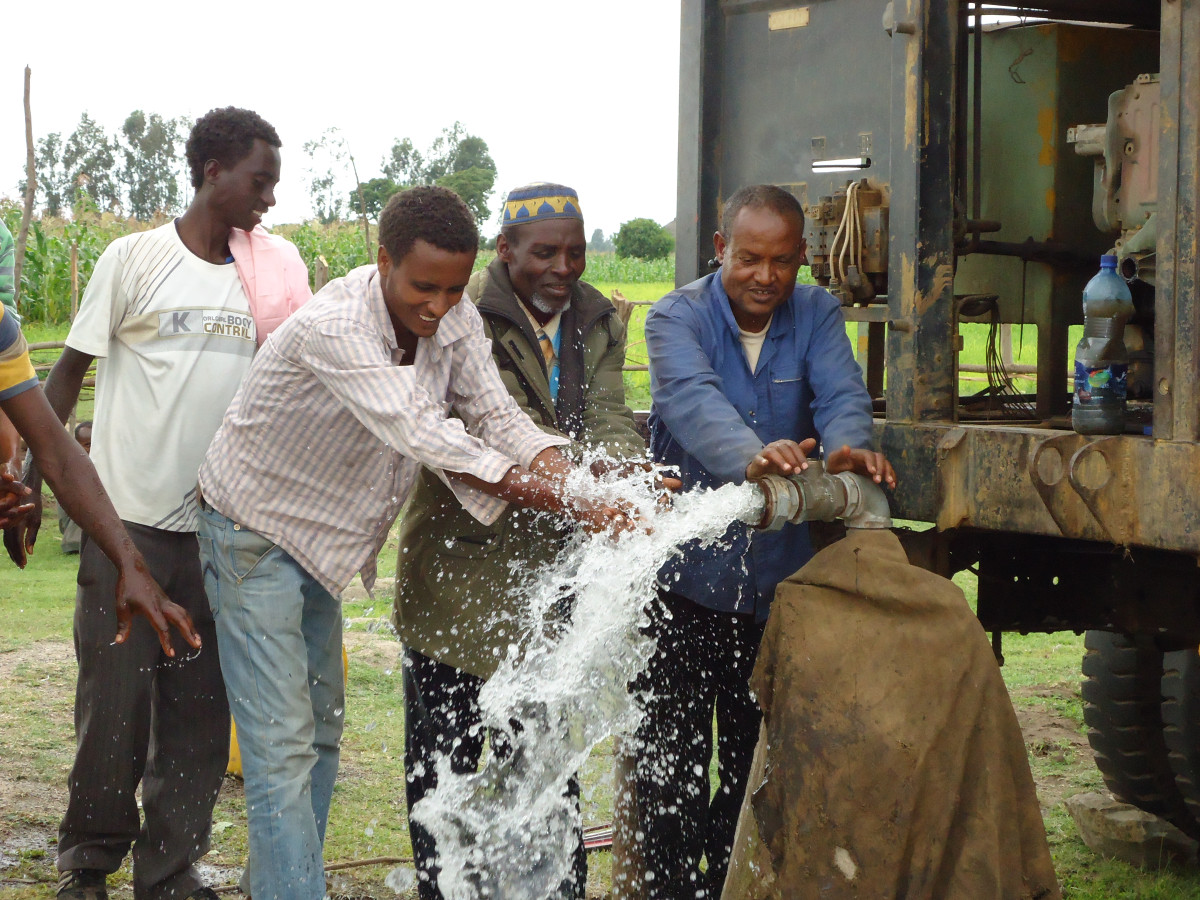MAKING THE INVISIBLE VISIBLE – World Water Day
Published: Mar 22, 2022 Reading time: 3 minutes Share: Share an articleFor this World Water Day 2022, the focus is groundwater, an invisible resource with an impact visible everywhere. Groundwater is water found underground in aquifers, which are geological formations of rocks, sands and gravels that hold substantial quantities of water. Groundwater feeds springs, rivers, lakes and wetlands, and seeps into oceans. Groundwater is recharged mainly from rain and snowfall infiltrating the ground. Groundwater can be extracted to the surface by pumps and wells. Life would not be possible without groundwater. Most arid areas of the world depend entirely on groundwater. Groundwater supplies a large proportion of the water we use for drinking, sanitation, food production and industrial processes.

According to United Nations:
•For some 2.5 billion people in the world, groundwater is their one and only source of freshwater.
• It is estimated that fewer than 20% of the world’s drainage basins exhibit nearly pristine water quality.
• Since 1900 the world has lost around 50% of its wetlands.
• Groundwater makes up 99 percent of all freshwater that is not frozen. It provides nearly half of the world´s population with drinking water and contributes to about half of the global food production.
• Globally, the number of lakes with harmful algal blooms will increase by at least 20% until 2050.
• Soil erosion from croplands carries away 25–40 billion tonnes of topsoil every year, significantly reducing crop yields and the soil’s ability to regulate water, carbon and nutrients, and transporting 23–42 million tonnes of nitrogen.
FOCUSING ON GROUNDWATER PROTECTION AND RECHARGE
Out of sight and out of mind, the quantity and quality of water stored under our feet are changing. Weather patterns are unstable and are becoming extreme due to climate change. Infiltration of rainwater into shallow underground aquifers is reducing because of the uneven distribution of rainfall where heavy rains follow droughts and floods wash away fertile topsoil. Water infiltrates deep layers very slowly, and it takes decades to replenish aquifers. Thus, once the negative trend of slowing groundwater replenishment is set, it is challenging to divert it.
The quality of life in rural communities where PIN works largely depends on sufficient groundwater quality and quantity. For example, due to specific geological conditions of the Rift valley in Ethiopia, hundreds of thousands of people in the Halaba region in south-eastern Ethiopia depend on deep groundwater sources. Productive aquifers are found at depths exceeding 150 meters. Because of this, detailed hydrogeological maps are essential to locate safe water sources in an area renowned for water with high fluoride levels.
Through development cooperation in Ethiopia, the Czech Development Agency supports long-term hydrogeological mapping projects in the country. The data collected is essential for effective planning and appropriate allocation of funds. Professional geological companies establish groundwater monitoring systems to foster principled, sustainable, and effective utilization of water resources.
PIN in Ethiopia uses hydrogeological data and maps to design interventions that increase access to water for rural communities. High yield boreholes drilled in drought-affected areas supply water to communities and increase their resilience to natural shocks.
To ensure the ability of soil and landscape to retain water and reduce the erosion and loss of quality topsoil, PIN has implemented natural resource management projects for more than a decade. Groundwater replenishment is supported by reforestation, anti-erosion measures, and the introduction of conservation agriculture principles. The increased ability of soil to retain water will recharge aquifers that are subject to declining yields, control saltwater intrusion, and prevent land subsidence. Watershed and natural resource management are also applied to sustain or improve the function of ecosystems and the quality of groundwater.
Increased access to drilling technology, focus on new infrastructure, and a lack of coordination leading to haphazard drilling of new sources rather than efforts to keep existing ones in operation. In many cases, this approach has meant depletion of underground water sources. In technical vocational education projects, PIN experts teach students and water scheme operators about the long-term and efficient usage of water sources, such as adapting pumping rates to the yield potential of the source. Trainees also learn to establish protection areas around the sources to protect the environment and water from contamination.
Useful links:



